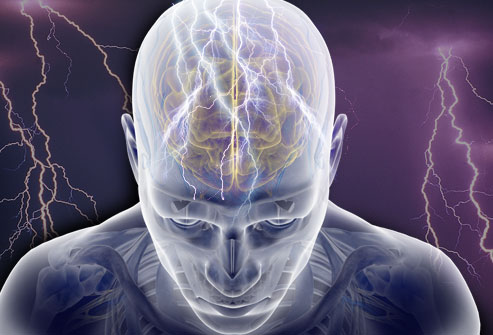Every time we eat, a complex symphony unfolds inside our bodies. With each bite of bread or sip of soda, the carbohydrates are broken down into glucose—the simplest form of sugar and the body’s preferred source of energy. That glucose travels from our gut into our bloodstream, signaling a biochemical performance that involves hormones, receptors, and cells all harmonizing to maintain a critical balance. Central to this orchestration is insulin—a hormone as essential to life as oxygen, yet often misunderstood.
Insulin does far more than help sugar enter cells. It is the conductor of metabolism, regulating not just blood sugar, but how fat is stored and used, how muscles take in energy, and how organs communicate. But in millions of people around the world, this vital process begins to go awry. Cells become unresponsive to insulin’s signal, glucose begins to build up in the bloodstream, and the delicate symphony of metabolism falls out of tune.
This condition is called insulin resistance, and while it often progresses silently for years, its consequences are far-reaching. It lies at the heart of type 2 diabetes, is linked to heart disease and obesity, and influences everything from energy levels to brain health. To truly grasp how our bodies handle sugar—and what happens when that process falters—we must delve into the intricate world of insulin and its resistance.
The Messenger Molecule That Changed Medicine
Insulin was first discovered in 1921 by Canadian scientists Frederick Banting and Charles Best. At the time, a diagnosis of diabetes—particularly type 1—was often a death sentence. Patients wasted away, unable to process sugar, their blood thick with unused glucose. Banting and Best isolated insulin from the pancreas and proved it could lower blood sugar in dogs. By 1922, they had treated their first human patient, and the transformation was immediate. What was once a fatal illness became manageable, and insulin therapy began its long history of saving lives.
But while insulin’s role in type 1 diabetes was immediately clear, its involvement in type 2 diabetes and metabolic disorders took longer to understand. The problem wasn’t always a lack of insulin—sometimes, there was plenty of it, even too much. The real issue was that the body wasn’t listening to insulin’s signal.
How Insulin Works to Balance Blood Sugar
When we consume carbohydrates, enzymes in the digestive system break them down into glucose. That glucose enters the bloodstream, raising blood sugar levels. In response, the pancreas—specifically, the beta cells of the islets of Langerhans—secretes insulin into the blood.
Insulin acts like a key. It binds to receptors on the surface of cells, especially in muscles, liver, and fat tissue, and unlocks them so glucose can enter. Once inside the cell, glucose is either used immediately for energy or stored for later use as glycogen in the liver and muscles, or as fat in adipose tissue.
This elegant mechanism keeps blood sugar within a narrow, healthy range. After a meal, insulin levels rise. As glucose is cleared from the blood, insulin levels fall. But in insulin resistance, this cycle becomes strained. Cells begin to ignore insulin’s signal. The pancreas tries to compensate by pumping out more insulin, but over time, this compensation becomes unsustainable.
The Cellular Blindness of Insulin Resistance
Imagine knocking on someone’s door repeatedly, only for them to ignore you entirely. That’s what happens during insulin resistance. Insulin is the hormone knocking on the cellular door, but the receptors are no longer responding appropriately. As a result, glucose lingers in the blood instead of being absorbed, leading to higher blood sugar levels.
At first, the body fights back. The pancreas works overtime, secreting more insulin to force glucose into cells. For a time, this extra effort keeps blood sugar levels relatively normal, a state known as compensated insulin resistance. But the cost is high—chronically elevated insulin levels (hyperinsulinemia) can have harmful effects of their own, promoting fat storage, increasing inflammation, and altering hormone balance.
Eventually, the beta cells in the pancreas begin to falter. They become exhausted and can no longer keep up with the demand. That’s when blood sugar starts to rise consistently, and prediabetes or type 2 diabetes can develop.
The Silent Onset and Early Warning Signs
One of the most insidious aspects of insulin resistance is that it can exist for years without symptoms. Many people only discover it after routine bloodwork reveals high fasting insulin or blood glucose levels, or after a diagnosis of prediabetes. Others may notice subtle signs: increased fatigue after meals, stubborn weight gain (especially around the midsection), or cravings for carbohydrates. Dark, velvety patches of skin on the neck or armpits, a condition called acanthosis nigricans, can also signal insulin resistance.
Eventually, more obvious symptoms emerge—frequent urination, excessive thirst, and blurred vision—hallmarks of progressing diabetes. But long before this point, insulin resistance may already be causing hidden damage.
The Web of Metabolic Dysfunction
Insulin resistance doesn’t exist in isolation. It’s often a central player in what’s known as metabolic syndrome—a cluster of conditions that include abdominal obesity, high blood pressure, elevated triglycerides, low HDL cholesterol, and high blood sugar. Together, these factors dramatically increase the risk of heart disease, stroke, and type 2 diabetes.
The liver is particularly vulnerable. In insulin resistance, the liver becomes less responsive to insulin’s usual directive to stop producing glucose. Instead, it continues to pump glucose into the bloodstream, exacerbating hyperglycemia. Simultaneously, insulin promotes fat synthesis in the liver, leading to the accumulation of fat droplets inside liver cells—a condition known as non-alcoholic fatty liver disease (NAFLD).
In women, insulin resistance is often linked to polycystic ovary syndrome (PCOS), a hormonal disorder marked by irregular periods, excess androgens, and ovarian cysts. In men, it may contribute to lower testosterone levels and erectile dysfunction. And in the brain, insulin resistance has been linked to cognitive decline and increased risk for Alzheimer’s disease—so much so that some researchers have dubbed Alzheimer’s “type 3 diabetes.”
The Genetic and Environmental Puzzle
Why do some people develop insulin resistance while others maintain metabolic health despite similar lifestyles? The answer lies in a complex interplay of genetics and environment.
There is a strong hereditary component to insulin resistance. People with a family history of type 2 diabetes are more likely to develop it themselves, especially if exposed to the same lifestyle factors. Certain ethnic groups—including South Asians, African Americans, and Native Americans—are also at higher risk.
But genes are only part of the equation. Environmental factors often determine whether those genetic tendencies are expressed. Diets high in refined carbohydrates and sugar, sedentary lifestyles, chronic stress, poor sleep, and even exposure to certain chemicals can all push the body toward insulin resistance.
Perhaps most striking is the role of body fat, particularly visceral fat—the kind that surrounds internal organs. Visceral fat is metabolically active and secretes inflammatory molecules and hormones that worsen insulin sensitivity. Weight gain, especially around the waist, is both a cause and consequence of insulin resistance.
Blood Sugar as a Window into Metabolic Health
Monitoring blood sugar is one of the most direct ways to understand how well the body is responding to insulin. Three key measurements are often used:
- Fasting blood glucose: Taken after at least 8 hours without food. A normal level is below 100 mg/dL. Levels between 100–125 mg/dL indicate prediabetes, and 126 mg/dL or higher suggests diabetes.
- Hemoglobin A1c: Reflects average blood sugar over the past two to three months. A level below 5.7% is normal, 5.7%–6.4% indicates prediabetes, and 6.5% or higher indicates diabetes.
- Oral glucose tolerance test (OGTT): Measures how the body handles a sugary drink over two hours. It can reveal early insulin resistance before fasting glucose rises.
More advanced tests, like fasting insulin levels or continuous glucose monitors (CGMs), provide deeper insights. CGMs are wearable devices that track glucose levels in real-time, offering a dynamic picture of how food, stress, exercise, and sleep affect blood sugar throughout the day.
Restoring Sensitivity Through Lifestyle Changes
The good news is that insulin resistance is not a one-way street. In many cases, it can be halted or even reversed—particularly in its early stages—through targeted lifestyle changes.
Exercise is one of the most powerful tools. Physical activity increases insulin sensitivity by stimulating glucose uptake in muscle cells, independent of insulin. Even a single session of brisk walking can improve glucose handling. Over time, regular aerobic and resistance exercise can dramatically reduce insulin resistance.
Diet is equally crucial. Reducing intake of refined sugars and starches, and replacing them with fiber-rich vegetables, healthy fats, and lean proteins, helps stabilize blood sugar and reduce insulin spikes. Low-carb or Mediterranean-style diets have shown particular promise.
Weight loss, even as little as 5–10% of body weight, can lead to significant improvements in insulin sensitivity, especially for those with central obesity. Sleep, often overlooked, is also essential. Chronic sleep deprivation increases insulin resistance, while adequate, high-quality sleep helps restore metabolic balance.
Stress management through techniques like mindfulness, yoga, and deep breathing reduces cortisol levels, which otherwise impair insulin signaling. And avoiding tobacco and minimizing alcohol intake support a healthier metabolic environment.
The Role of Medications and Emerging Therapies
For those with more advanced insulin resistance or type 2 diabetes, medications can provide essential support. The most commonly prescribed is metformin, which improves insulin sensitivity in the liver and reduces glucose production. It’s often the first-line treatment for type 2 diabetes and sometimes even prescribed to women with PCOS.
Other medications target different pathways. GLP-1 receptor agonists (like semaglutide) not only lower blood sugar but also promote weight loss and improve cardiovascular outcomes. SGLT2 inhibitors help the kidneys excrete excess glucose. Insulin itself may be required if beta-cell function declines significantly.
Researchers are also exploring new frontiers—modifying gut bacteria to improve insulin sensitivity, targeting inflammation with novel compounds, and using personalized nutrition based on genetic and microbiome data. The future of treating insulin resistance may look very different from today’s one-size-fits-all model.
Insulin Resistance in a Global Epidemic
Insulin resistance is not just a personal health issue—it’s a public health crisis. More than 1 in 10 adults worldwide now have diabetes, and many more have prediabetes or undiagnosed insulin resistance. The rise parallels the global spread of ultra-processed foods, sedentary work, and poor sleep patterns.
Children and adolescents are increasingly affected. Rates of type 2 diabetes in youth are climbing, and fatty liver disease is now the most common liver condition in children in developed nations. These trends foreshadow a future where chronic disease begins earlier, lasts longer, and costs more—both in dollars and in lives.
Addressing insulin resistance requires more than individual action. It demands systemic changes: food environments that support health, urban design that encourages movement, schools that prioritize nutrition and physical activity, and healthcare systems that focus on prevention as much as treatment.
The Path to Metabolic Resilience
Understanding insulin resistance is more than a medical necessity—it is a key to unlocking vitality, longevity, and well-being. By tuning into the signals our bodies send—through blood sugar, energy levels, cravings, and weight—we can begin to take charge of our metabolic health.
The path forward isn’t about restriction, punishment, or perfection. It’s about connection—understanding how our choices, environments, and histories shape our biology. With awareness comes empowerment. And with empowerment, change becomes possible.






